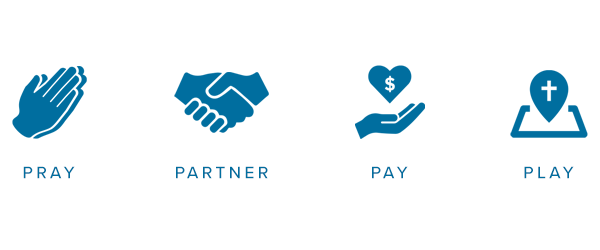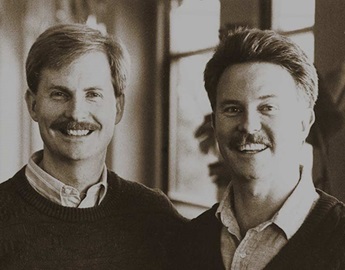4 reasons church planting is the best investment
Lee Stephenson
Former Vice President of Church Planting
Point Magazine // September 2020
The standard opinion of most people about church planting tends to fall into one of these categories:
There is no room for another church in our community. We already have plenty. We just need help getting them filled.
Isn’t America over church? Why do we need more churches?
We just need better churches — not new churches.
Not only are these opinions typical, they are natural. However, they come from bad experiences and/or preconceived assumptions. To help us understand why church planting is vital, let’s try to answer the question, “Is church planting a good investment?”
Whether connecting relationally, financially or birthing a new church, existing churches benefit from getting involved in church planting for several reasons:
1. People need Jesus
It is difficult to deny that church plants reach more lost people with the good news of Jesus than most established churches. That’s why, whether connecting relationally or financially or by birthing a new church, existing churches benefit from getting involved in church planting. Starting a church is a good investment because the church extends the reach of the gospel.
This being the case, we need a lot more church planting to take place. This is why we work hard to plant churches that plant churches that plant churches.
No one church in America has the capacity or the ability to reach all the lost people in its backyard.
I am encouraged that church planting exists today. However, no one church in America has the capacity or the ability to reach all the lost people in its backyard. We need all kinds of churches to make church planting a part of our mission strategy.
Even churches that need to be revitalized also need to be involved in starting new churches.
2. Church planting aligns with our biblical calling
Church planting is a good investment because we are fulfilling the Great Commission. In the Book of Acts, we see the practical fulfillment of the Great Commission as churches are planted.
Furthermore, Acts 13 shows us the church in Antioch understood the call and work still before them. This led them to commission Paul and Barnabas to share the message of Jesus and start new churches.
Yes, Paul and Barnabas went out to evangelize but they also worked to establish congregations. Theirs wasn’t a one-time occurrence, however. The pattern is repeated throughout the Pauline Epistles.
Paul constantly reminds the churches of the work that was being done and of new needs and opportunities for continued partnership. Sharing the work is what it means to be about the Great Commission and to live as a Great Commission church.
3. New churches help surface creativity
Existing churches can easily get caught up in routine and tradition while having the finances to push rocks out of the way when necessary. New churches usually have a lack of resources when it comes to people and money. Thus, to move forward and get big rocks out of the way, they have no choice but to be creative with what they have.
The next wave of cutting-edge ministry will most likely come from the new generation of churches being planted.
Challenge oftentimes is the birthplace of new and great ideas. Often the result of an existing church’s investment in church planting is being able to benefit from the plant’s creative success.
The next wave of cutting-edge ministry will most likely come from the new generation of churches being planted.
4. Birthing churches opens the doors for new leaders
As Christians, we are all called to love the church more than we love a church. When we begin to live and lean into this kingdom-mindedness, we move personally and corporately to living with a sending mentality. In other words, we value developing and sending leaders to carry out God’s mandates in our places.
Church planting is a good investment because it forces us to adopt a sending mentality. When a church embraces this mentality, it is a win for the kingdom. As leaders are raised and sent out, opportunities for others to step up and fill the gaps are heightened and necessary.
Sending creates a continual cycle of leaders being developed and sent. If this were embraced by everyone, the harvest would never find itself undermanned or underfunded.
Learning from the past, looking toward the future
After World War I, church planting in the United States plummeted. Before the start of WWI, the ratio of churches was one church for every 430 persons. One-third of those churches were less than 25 years old.1 As a result, the percentage of Americans involved in the life of a local church rose to an all-time high by 1916.
Following WWI, much of the decline of the local church, specifically church planting, was because of denominational/church wars. We fought each other instead of working together to reach our neighbors.
What can we learn from this? Church attendance in the United States has been in decline and continues to decrease.
We need to recapture what happened in our country over 100 years ago. We need to plant churches at such a rate that we continually have 1 church per 1000 people.
How do we do this? It starts with us.
Earlier this year, Converge’s 11 districts committed to plant a combined 312 churches in the next five years. If each of these church plants grows to just 200 people, they will impact more than 62,000 lives.
Imagine how many of these 62,000 people God will use to impact many more lives with the life-changing gospel of Jesus Christ. It’s a ripple effect that can span generations.
But if God isn’t in this church planting movement, it won’t go anywhere.
And if God is in this church planting movement, he will do immeasurably more than all we could ever ask or imagine. Let’s focus on him. Let’s pray. Let’s sacrifice.

Four ways your church can be a part of this great task that lies ahead are to:
1. Pray: Pray about how God will use your church to start new churches that reach communities with the gospel.
2. Partner: Partner with other churches to plant a church. Your church can also partner with a church planter who has been called to plant and lead a church.
3. Pay: Financially support a church plant or send a church planter to Converge’s Church Planting Assessment Center.
4. Play: Plant a new church or church campus.
Today, begin praying about how you and your church will be a part of our Converge church planting movement. It’s time to stop settling for the status quo and help more people meet, know and follow Jesus.
1 Lyle Schaller, 44 Questions for Church Planters (Nashville; Abingdon, 1991), pp.14-16.
Lee Stephenson, Former Vice President of Church Planting
Lee Stephenson served as Converge's vice president of Church Planting from 2015-2022. He earned both a bachelor and master’s degree in ministry from Bethel College (Mishawaka, IN). Lee also started and is lead pastor of Harvest Community Church, Orlando, Florida. He has also served on the Vision Arizona church planting LEAD team and is a go-to coach for church leadership and planting.
Additional articles by Lee Stephenson


